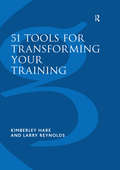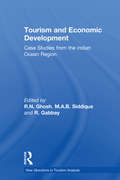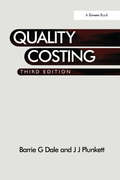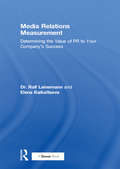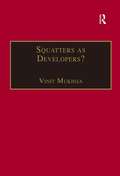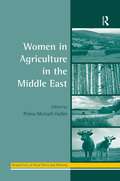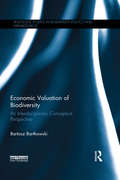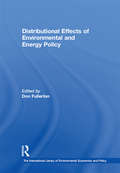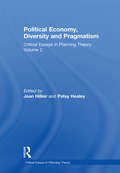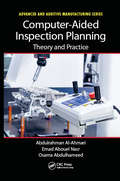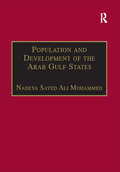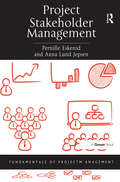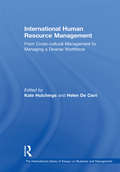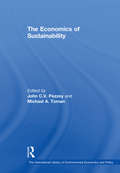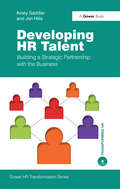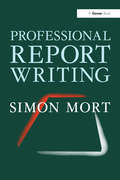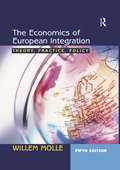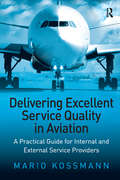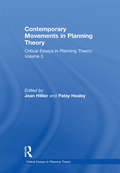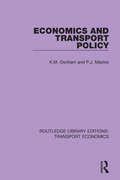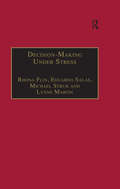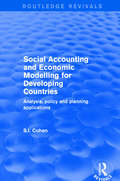- Table View
- List View
51 Tools for Transforming Your Training: Bringing Brain-Friendly Learning to Life
by Kimberley Hare Larry ReynoldsBrain-Friendly Learning is not about techniques and gimmicks. It is far more than just putting on baroque music, or playing fun games. It's a movement rather than just a method; a movement to recover the real joy of learning that combines both sizzle and substance to every part of your training. This resource provides a blueprint for a new generation of accelerated learning methods. At its heart are five key principles: ¢ Keep it real ¢ Facilitate the flow ¢ Honour uniqueness ¢ Make it rich and multi-sensory ¢ State is everything (well almost). There is a clear explanation of the theory behind Brain-Friendly Learning from the inside out; the concepts and learning models you need to underpin your approach, along with a journey through the most complex structure in the universe - your amazing brain. You'll also discover a concise guide to brain-friendly training design along with tools that you can pick and adapt to help you create new training events or make-over existing ones. This resource is packed with activities for the trainer or facilitator. Some are designed to help you understand a particular concept in more detail; others are designed to apply the concept to learning events which you are facilitating. You will have attended or facilitated (some) training sessions that engaged you, motivated you and left you with new insights and new techniques that you were just burning to try. At the time, you may not have been able to define what it was about these events that made them so special. This resource helps you to understand exactly what the mystery ingredient is and shows you how to use the whole encyclopedia of techniques that turn training into Brain-Friendly Learning.
Tourism and Economic Development: Case Studies from the Indian Ocean Region (New Directions in Tourism Analysis)
by Ghosh M. A. B SiddiqueTourism has increasingly become a vital element in the economic development of the Indian Ocean region. This volume brings together leading tourism and economics experts from the region to discuss the wide range of problems and issues raised by the increasing significance of tourism such as: tourism and development; dimensions of and assault on rural and urban poverty; empowerment of women; women’s property rights; access of the rural poor to services and resources; political and economic impediments to human resources development; management of energy and environmental resources; and electronic commerce and development. These issues and proposed policies are examined theoretically in the first section of this book, with comparative empirical case studies from Australia, Papua New Guinea, Botswana, Hong Kong, Singapore, India, the Maldives, Mauritius, the Seychelles, China and South Africa illustrating these arguments in the second section. A conclusion sums up the problems found in current policy and practice and puts forward innovative proposals and prospects for tourism and development in the region.
Quality Costing
by Barrie G. Dale J.J. PlunkettQuality costs help to show the importance of quality-related activities to management; they demonstrate the cost of non-quality to an organization; they track the causes and effects of the problem, enabling the working out of solutions using quality improvement teams, and then monitoring progress. As a technique in the introduction and development of TQM, quality costing is a powerful tool for enhancing a company’s effectiveness. Quality Costing provides pragmatic advice on how to set about introducing and developing a quality costing system and using the data that emerges. This third edition (strengthened by additional data from a range of organizations) provides sound practical guidance on how to define, identify, collect, measure, analyse, report and use quality costs. This established text has proved invaluable to managers and quality professionals, students and academics alike - the new edition ensures its continued position as the leading book in the field.
Media Relations Measurement: Determining the Value of PR to Your Company's Success
by Ralf Leinemann Elena BaikaltsevaNowadays most managers seek a complete picture when it comes to return on investment and this applies to PR too. Despite this, and the developments in measurement tools for marketing and advertising, PR has lagged behind and different professionals have favoured different models. Ralf Leinemann and Elena Baikaltseva's book brings together the range of models for evaluating PR effectiveness and develops them into a series of appropriate tools for business use. Basic concepts such as balanced scorecards, business fundamentals and planning processes are all covered. The authors also introduce their own theory of PR evaluation and apply it to five different types of activity: interviews, press conferences, generic campaigns, crisis PR and long-term projects. In addition, the book contains many valuable tips and real-life examples throughout. Written for corporate PR practitioners and marketing/communications specialists, this book brings together business objectives and the evaluation of company impact in terms of media, reputation, visibility of the company and its competitors. In total, more than 60 different methods of evaluation are discussed, providing readers with an indispensable toolkit for mapping each PR task or project by selecting the appropriate method from the menu provided.
Routledge Revivals: Reactions to the Right (Routledge Revivals)
by Barry HindessFirst published in 1990, this book was intended as a counter to the rising and continued strength of the New Right and an attempt to bolster the perceived weakness of the opposition — providing a critical discussion of New Right ideology and also of the more influential Left reactions to them. The contributors scrutinise the attempts to reconstruct the idea of socialism in the 1990s, and pinpoint the relation of socialism to freedom, equality and the market. In the course of this searching evaluation, they also take up issues relating more directly to specific policy areas such as monetary policy and international finance, secondary education, social welfare, and race relations.
How Healthcare Data Privacy Is Almost Dead ... and What Can Be Done to Revive It!
by John J. Trinckes, Jr.The healthcare industry is under privacy attack. The book discusses the issues from the healthcare organization and individual perspectives. Someone hacking into a medical device and changing it is life-threatening. Personal information is available on the black market. And there are increased medical costs, erroneous medical record data that could lead to wrong diagnoses, insurance companies or the government data-mining healthcare information to formulate a medical ‘FICO’ score that could lead to increased insurance costs or restrictions of insurance. Experts discuss these issues and provide solutions and recommendations so that we can change course before a Healthcare Armageddon occurs.
Brand Planning for the Pharmaceutical Industry
by Janice MacLennanWritten by John Lidstone and Janice MacLennan, the second edition of Marketing Planning for the Pharmaceutical Industry became accepted as the bible for the industry. In this new companion book Janice MacLennan picks up two of the themes touched on in Marketing Planning - market segmentation and branding, and the inter-relationship between these two - and with this book makes them key topics for discussion. Brand Planning for the Pharmaceutical Industry begins by exploring what branding is and why it is of importance, particularly to the pharmaceutical sector. The book then goes on to show how branding can be integrated into the early stages of the commercialization process for new products, both in theory and in the 'real' world. The book provides a step-by-step guide to brand planning, using market segmentation as the starting point. The book is split into two parts, the first dealing comprehensively with brand planning for products yet to get to the market, with the second part applying the same process to products that are already on the market. Both parts are extremely pragmatic, full of pertinent examples and insights from the pharmaceutical industry, and are directly applicable to your own brand planning. Brand Planning for the Pharmaceutical Industry concludes by confronting the problems that organizations are likely to have in actually making brand planning an integral part of their work and presents strategies for dealing with them.
Squatters as Developers?: Slum Redevelopment in Mumbai (King's SOAS Studies in Development Geography)
by Vinit MukhijaIn the mid-1990s, the state government of Maharashtra introduced an innovative strategy of slum redevelopment in its capital city, Mumbai (Bombay). Based on demolishing existing slums and rebuilding on the same sites at a higher density, it is very distinct from the two prevalent conventional strategies with respect to slums in developing countries - slum clearance and slum upgrading. So why did the slum redevelopment strategy originate in Mumbai, and how did it do so? What were the key issues in the implementation of such a project? This critical volume responds to these questions by closely examining one particular redevelopment project over a period of twelve years: the Markandeya Cooperative Housing Society (MCHS). It analyzes the problems faced and the solutions innovated; identifies non-traditional issues often overlooked in housing improvement strategies; reveals the complexities involved in housing production for low-income groups; and combines in-depth empirical research with historical, institutional, spatial and financial perspectives to improve our understanding of complex urban development processes.
Women in Agriculture in the Middle East (Perspectives on Rural Policy and Planning)
by Pnina Motzafi-HallerBased on a collaborative research project - an exciting fruit of the region's peace process - this book provides an in-depth examination and comparison of women's participation in agricultural production in four Middle-Eastern countries: Egypt, Jordan, Palestine and Israel. Each of the country studies is set in context, providing an overview of the status of women in the national economy and society, and in education and law, before proceeding to analyze the status and roles of women in the rural sector. These up-to-date overviews are based on published and unpublished data, much of which is available for the first time in English. But the book can also be read as a fascinating story of the way gender is introduced into a complex political setting where "development work" is done. It offers a reflexive, critical examination of the very process of its own production and some general observations about the links between academic and development-centred discourses.
Economic Valuation of Biodiversity: An Interdisciplinary Conceptual Perspective (Routledge Studies in Biodiversity Politics and Management)
by Bartosz BartkowskiWhile biodiversity loss is an ecological phenomenon, it also has further dimensions – political, social and, last but not least, economic. From the economic perspective, the rapid loss of biological diversity can be viewed in two ways. First, the consequence of this deterioration process is a loss of options and an increase in scarcity of the environmental ‘good’, biodiversity. Second, economic activity and the structure of global and local economic institutions have frequently been identified as the major drivers of biodiversity loss. In economic terms, this constitutes a market failure – market-based economic activities lead to processes which undermine the long-term stability of these very activities. This book provides an ecological economic perspective on the value of diversity in ecosystems. Combining insights from various sub-disciplines of ecology and environmental/ecological economics, the author constructs a conceptual framework which identifies the ways in which biodiversity influences human well-being and offers a novel, unifying perspective on the economic value of biodiversity. This framework demonstrates that biodiversity’s economic value mainly results from uncertainty about the future, regarding both supply of and demand for ecosystem services, and interconnections between ecosystems. The book goes on to identify suitable methods for economic valuation of biodiversity and discusses the currently underdeveloped and underused approach of deliberative monetary valuation. Combining a strong theoretical framework with practical examples, this book will be of great interest to students and researchers of ecological economics, ecosystem services, environmental values and environmental and resource economics.
Distributional Effects of Environmental and Energy Policy (The International Library of Environmental Economics and Policy)
by Don FullertonMany effects of environmental and energy policy are likely to disproportionately burden those with low income. First, it raises the price of fossil-fuel-intensive products that constitute a high fraction of low-income budgets (like gasoline, heating fuel and electricity). Second, the handout of pollution permits to firms provides value to those who own them. Third, low-income individuals may place more value on food and shelter than on improvements in environmental quality, so high-income individuals may get the most benefit of pollution abatement. Fourth, air quality improvements may raise the value of houses owned by landlords, rather than helping renters. These effects might all hurt the poor more than the rich. This book brings together the seminal economics literature that studies whether these fears are valid and whether anything can be done about them.
Political Economy, Diversity and Pragmatism: Critical Essays in Planning Theory: Volume 2 (Critical Essays in Planning Theory)
by Patsy HealeyPlanning Theory has a history of common debates about ideas and practices and is rooted in a critical concern for the 'improvement' of human and environmental well-being, particularly as pursued through interventions which seek to shape environmental conditions and place qualities. The second volume in this series covers in detail critical political economy, the turn to diversity and critical pragmatism. It provides an authoritative collection, in an accessible form, of the most important and influential articles and papers along with a detailed introduction by the editors. It offers a unique reference resource for planning scholars, upper-level undergraduate and post-graduate students.
Computer-Aided Inspection Planning: Theory and Practice (Advanced and Additive Manufacturing Series)
by Abdulrahman Al-Ahmari Emad Abouel Nasr Osama AbdulhameedThe inspection process is one of the most important steps in manufacturing industries because it safeguards high quality products and customer satisfaction. Manual inspection may not provide the desired accuracy. This book introduces and implements a new methodology and develops the supporting technologies for automated inspection planning based on Computer Aided Design (CAD) models. It also provides and implements an efficient link for automated operation based on Coordinate Measuring Machine (CMM). The link’s output is a DMIS code programming file based on the inspection planning table that is executed on CMM.
Population and Development of the Arab Gulf States: The Case of Bahrain, Oman and Kuwait
by Nadeya Sayed MohammedThis thought-provoking study measures and critically examines the effects that an average population growth rate of 2.8% could have on the development of the Arab Gulf States. It questions the ability of Gulf governments to continue providing relatively high standards of education, health and employment under conditions of rapid population growth, an undiversified economic base, and a tribal political framework.  Within this context, population growth is identified as one important variable that hinders long-term development. The book will appeal to all those interested in the Middle East, demography, development and sociology.
Project Stakeholder Management: Project Stakeholder Management (Fundamentals of Project Management)
by Pernille Eskerod Anna Lund JepsenCarrying out a project as planned is not a guarantee for success. Projects may fail because project management does not take the requirements, wishes and concerns of stakeholders sufficiently into account. Projects can only be successful through contributions from stakeholders. And it is the stakeholders that evaluate whether they find the project successful - an evaluation based on criteria that go beyond receiving the project deliverables. More often than not, the criteria are implicit and change during the project course. This is an enormous challenge for project managers. The route to better projects, say Pernille Eskerod and Anna Lund Jepsen, lies in finding ways to improve project stakeholder management. To manage stakeholders effectively, you need to know your stakeholders, their behaviours and attitudes towards the project. The authors give guidance on how to adopt an analytical and structured approach; how to document, store and retrieve your knowledge; how to plan your stakeholder interactions in advance; and how to make your plans explicit, at the very least internally. A well-conceived plan can prevent you from being carried away in the ’heat of the moment’ and help you spend your limited resources for stakeholder management in the best way. To make this plan, you need to agree on the objectives of your stakeholder strategy and ways to achieve them. Project Stakeholder Management offers tactics and tools founded on established marketing communications theory as well as strategic management for doing just that. This book is part of Gower’s Fundamentals of Project Management Series.
International Human Resource Management: From Cross-cultural Management to Managing a Diverse Workforce (The International Library of Essays on Business and Management)
by Helen De CieriSince the late 1970s scholars and practitioners of international management have paid increasing attention to the impact of globalisation on the management of human resources across national boundaries. This collection of important articles and essays provides a comprehensive review and critique of developments and future directions in International Human Resource Management. Focusing on three major developments or approaches - Cross-Cultural Management, Comparative HRM and Strategic HRM, the volume explores challenges and opportunities facing researchers, international managers and employees.
The Economics of Sustainability (The International Library of Environmental Economics and Policy)
by John C.V. Pezzey Michael A. TomanBefore the late 1980s, when the ideas of sustainability and sustainable development to the forefront of public debate, conventional, neo-classical economic thinking about development and growth had rarely given any consideration to the needs of future generations, or the sustainability of natural resource use. Defining sustainability broadly as intergenerational fairness in the long-term decision making of a whole society, and using established economic concepts, this selection of refereed journal articles brings a famously ill-defined concept into sharp focus, providing academics at all levels with a formidable research tool. Spanning thirty years of the most important philosophical, theoretical and empirical contributions from both critics and defenders of neo-classical assumptions and methods of economic analysis, this focused collection of papers constitutes a unique, balanced resource on the full range of intellectual debates surrounding the economics of sustainability.
Developing HR Talent: Building a Strategic Partnership with the Business (Gower HR Transformation Series)
by Kirsty Saddler Jan HillsFaced with numerous challenges, from globalism to economic turbulence, organizations need an Human Resources function that can lead from the front. The process of transforming HR is complex (and rarely linear). It involves creating a function that can direct the strategic debate, gain agreement and then execute and measure the results which, for some, involves a highly complex and often painful process of change. In this book the authors describe best practice in talent management for the HR function. They share, and guide you through, their model for successful HR development, and point you to potential solutions and good practice which has worked for other companies. This book is part of the Gower HR Transformation Series which uses a blend of conceptual frameworks, practical advice and global case study examples to cover each of the main elements of the process. The books follow a standard format to make them easy to read and reference. Together, the titles in the series create a definitive guide to HR transformation from one of the leading specialist HR transformation consultancies; an organization that has been involved in HR transformation projects for clients as diverse as Bombardier Transportation, Marks & Spencer, Barnardo's, Oxfam, Schroders, HM Prison Service, Transport for London and Vodafone.
Professional Report Writing
by Simon MortProfessional Report Writing is probably the most thorough treatment of this subject available, covering every aspect of an area often taken for granted. The author provides not just helpful analysis but also practical guidance on such topics as: ¢ deciding the format ¢ structuring a report ¢ stylistic pitfalls and how to avoid them ¢ making the most of illustrations ¢ ensuring a consistent layout. The theme throughout is fitness for purpose, and the text is enriched by a wide variety of examples drawn from the worlds of business, industry and government. The annotated bibliography includes a review of the leading dictionaries and reference books. Simon Mort's book is destined to become an indispensable reference work for managers, civil servants, local government officers, consultants and professionals of every kind.
The Economics of European Integration: Theory, Practice, Policy (Routledge Revivals Ser.)
by Willem MolleThrough four previous editions The Economics of European Integration by Willem Molle has established itself as a preferred textbook for students of the economics of the EU as well as a reliable reference work for those with a professional interest in the European Union. Carefully revised, this fifth edition takes into account changes in course requirements, new statistical information, and recent policy developments. It includes new material on: - the ongoing integration of the New Member States and the new forms of association with accession countries in Central and Eastern Europe; - the implementation of the Monetary Union and the performance of the euro; - the EU experience as a guide for the economic integration of other regions and for the improvement of world economic governance. Written in a clear style and combining original insights with authoritative analysis, this new edition will further enhance the book's reputation for providing the ideal introduction to the economics of the European Union.
Delivering Excellent Service Quality in Aviation: A Practical Guide for Internal and External Service Providers
by Mario KossmannA practical and realistic guide for both external and internal service providers in an aviation context to implementing an effective way to control the service quality as perceived by their customers, Delivering Excellent Service Quality in Aviation is essential for those service providers that are not yet systematically managing their service quality. Offering a step-by-step and easy to understand framework, it also enables those service providers that are already proactively managing their service quality to build new techniques into current practice for maximum effect. By using this guide, decision-making as well as budget and capacity planning can be optimized and justified to any stakeholders in the service operation. Customer satisfaction can be improved considerably over time and, thereby, profits (or budget allocation for internal service providers). Crucially, the improvements the book provides can be systematically measured and easily disseminated throughout the organization, leading to increased levels of motivation amongst staff.
Contemporary Movements in Planning Theory: Critical Essays in Planning Theory: Volume 3 (Critical Essays in Planning Theory)
by Patsy HealeyPlanning Theory has a history of common debates about ideas and practices and is rooted in a critical concern for the 'improvement' of human and environmental well-being, particularly as pursued through interventions which seek to shape environmental conditions and place qualities. The third and final volume in this series covers Contemporary Movements in Planning Theory and topics include communicative practices and the negotiation of meaning, networks, institutions and relations, and the complexity 'turn'. The articles selected represent the most influential and controversial recent work in planning theory and are supplemented by detailed introductions by the editors.
Economics and Transport Policy (Routledge Library Editions: Transport Economics #7)
by K.M. Gwilliam P.J. MackieThis book, first published in 1975, discusses the development of transport policy in the UK against a background of economic theory. It comprises a comprehensive review of transport policy both in urban and inter-urban situations from an economic standpoint. It provides the tools for analysis of policy changes in the transport sector.
Decision-Making Under Stress: Emerging Themes and Applications
by Rhona Flin Eduardo Salas Michael Straub Lynne MartinIn our high technology society, there is a growing demand for a better understanding of decision making in high risk situations in order to improve selection, training and operational performance. Decision Making Under Stress presents a state-of-the-art review of psychological theory, in research and practice, on decision making in high pressure and emergency situations. It focuses on the experienced decision makers who deal with such risks, principally on flight decks, at civil emergencies, in industrial settings and military environments. The 29 chapters cover a wide range of perspectives and applications from aviation, military, industry and the emergency services. The authors, all international invited experts in their field, are based in research centers and universities from Europe, North America and Australia. Their common interest is in the theories and methods of a new research domain called NDM (naturalistic decision making). This volume comprises the edited contributions to the Third International NDM conference, sponsored by the US Army Research Institute and the US Naval Air Warfare Center, which was held in Aberdeen, Scotland in September 1996. The NDM researchers are interested in decision making in situations characterised by high risk, time pressure, uncertain goals, ambiguous information and teamwork. The extent to which the NDM approach can explain and predict human performance in such settings is a central theme, discussed with many practical examples and applications. This book is essential reading for applied psychologists, pilots, emergency commanders, military officers, high hazard managers, safety and emergency response professionals.
Social Accounting and Economic Modelling for Developing Countries: Analysis, Policy and Planning Applications (Routledge Revivals Ser.)
by S.I. CohenThis title was first published in 2002. Providing the first comprehensive systematic assessment of the social accounting matrix (SAM) in twenty developing countries, Solomon Cohen introduces key research in the area and looks at its practical applications. Divided into two parts, the first part of each chapter: -Deals with the construction and structural analysis of the SAM -Examines refinements of the SAM as a self-contained model of the economy; study of SAM multipliers of growth and distribution -Explores decompositions of multiplier effects and cross-country and inter-temporal comparative analysis of changing economic structures. The second part looks at the SAM as a modular framework and a database, which can be flexibly used in economic policy modelling. This valuable reference, and the accompanying volume Social Accounting or Industrial and Transition Economies will be an essential addition to the bookshelves of researchers, instructors, policy makers, scholars and libraries.
